10 Pretty Small Towns In Germany
German small towns have an air of charm about them. I adore them, but I’m unsure how to describe them. I can’t get enough of little town Germany, with its half-timbered buildings, serene surroundings, and hanging planter boxes on every house.
I adore road vacations, especially in Germany, because of the amazing roads there.
Small towns have provided me with charming and endearing exchanges that have somewhat improved our understanding of this strange land I call home.
One of its many wonderful aspects is that you may just enjoy yourself while visiting these lesser-known locations rather than having a large list of must-see sights to mark off.
After seeing a handful of these locations, I hope you will have the same deep affection for small-town Germany as I have.
Pretty Small Towns In Germany to Visit
1- Cochem

Cochem is one of the most charming German towns, in my opinion. This has all the fairytale feelings you could dream of.
A spectacular medieval castle stands on top of a rock overlooking the town, which is adjacent to a flowing river on the slope of the Moselle Valley. There isn’t a more lovely place in the world.
Of course, seeing the Reichsburg Cochem castle is my favorite thing to do here. A fantastic 40-minute tour allows you to view much of this beauty from the 12th century.
The historic town of Cochem is also a fantastic location to visit. It contains some of the gates that once marked the entrances to this town and a portion of the remnants of the fourteenth-century wall.
For visitors to Cochem between mid-March and November, a gondola chairlift called the Cochem Sesselbahn takes them from the lower station in the Endert Valley to the Pinnerkreuz viewing point. The scenery is spectacular.
2- Rothenburg ob der Tauber
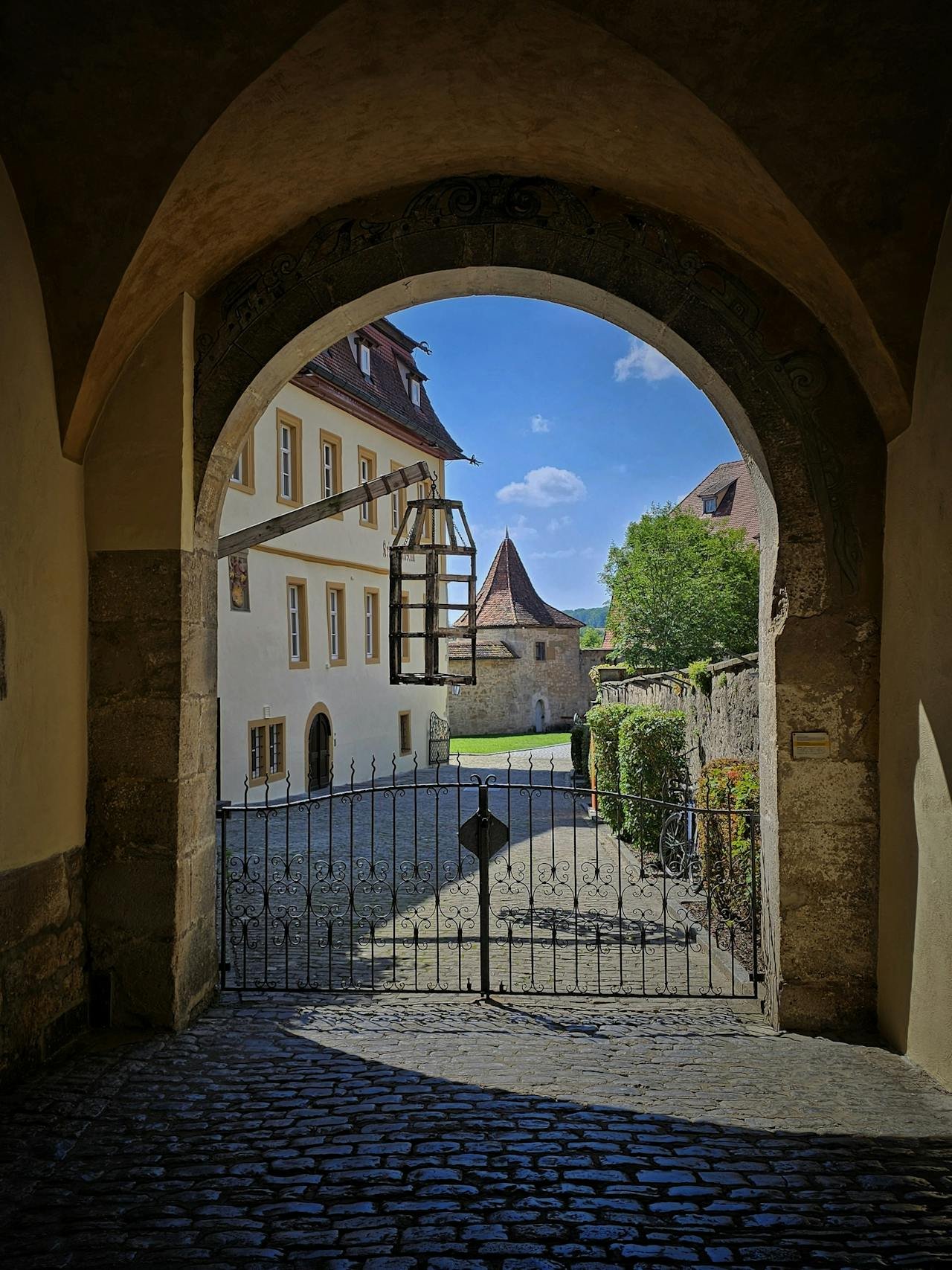
Rothenburg ob der Tauber is undoubtedly one of the most attractive places, and it automatically comes to mind when people think of Germany. Numerous people’s Instagram feeds have shown this breathtakingly beautiful city.
And with good cause! Rothenburg has the uncanny appearance of a fairy tale. It is a segment of the Romantic Road, which connects Würzburg and Füssen and passes through several small towns and castles.
One of just three medieval towns in Germany with its whole ancient city wall still standing is Rothenburg ob der Tauber.
Taking in the ancient ambiance and architecture while meandering through the little streets is the ideal way to spend one day in Rothenburg ob der Tauber.
The city is lovely year-round, but winter adds even more beauty. Rothenburg ob der Tauber organizes one of the world’s most enchanting and well-liked Christmas Markets every December.
3- Bamberg
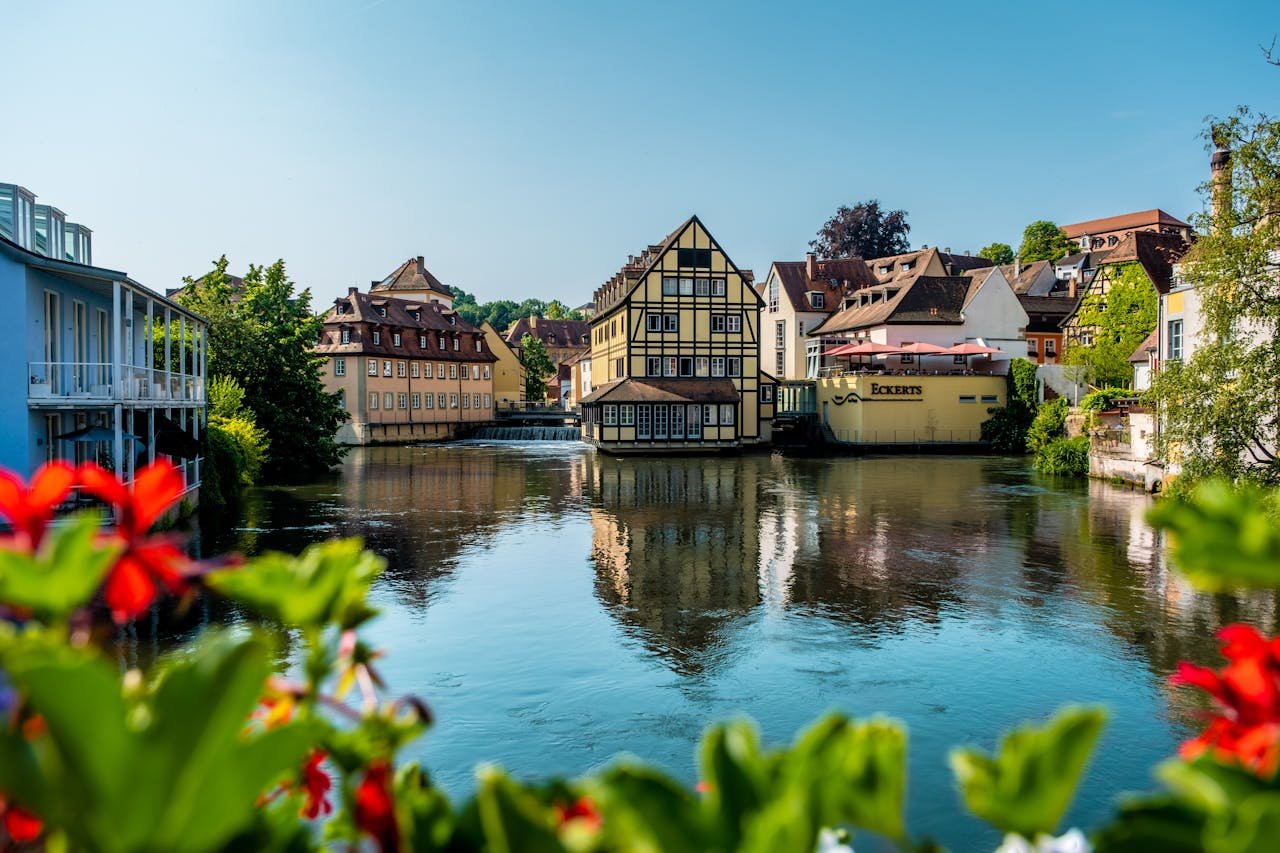
Bavaria is home to Bamberg, one of Germany’s most well-known historical towns. It is a UNESCO World Heritage site known for its lengthy history. Emperor Heinrich II established the city in the tenth century and declared it the capital of the Holy Roman Empire.
In the Middle Ages, Bamberg became a major trading and commercial hub. The city saw the construction of several churches and monasteries, indicating its importance as a religious hub.
The most well-known is the Bamberg Cathedral, one of Germany’s greatest Romanesque structures, constructed in the 13th century.
4- Quedlinburg
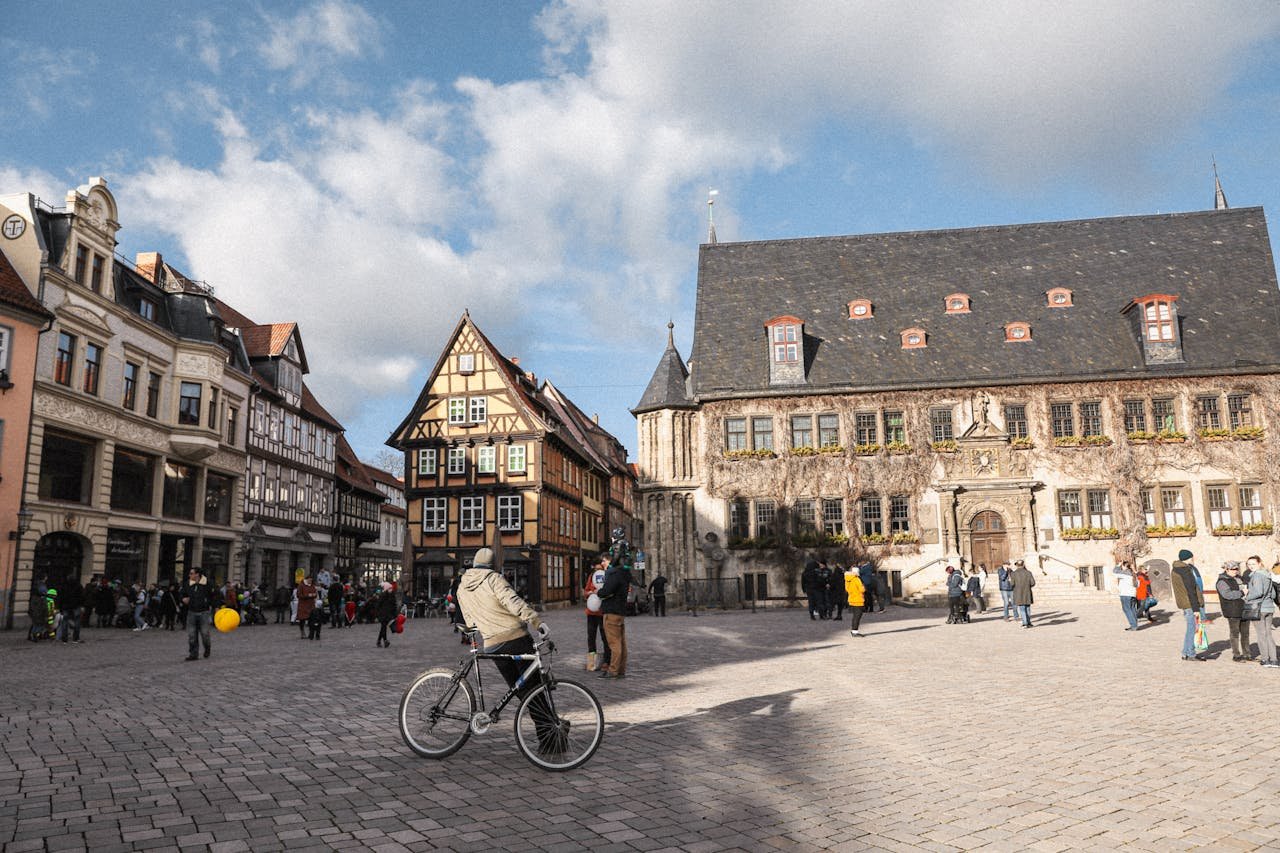
Quedlinburg, one of Germany’s oldest and best-preserved towns, dates back to the tenth century.
The Old Town of the ancient city, which has over 2,000 half-timbered homes, and the 12th-century Collegiate Church of St. Servatius are major reasons why the entire city is recognized as a UNESCO World Heritage Site.
The Rathaus, an ivy-covered stone historic town hall in the Gothic style of the city’s central market square, is equally remarkable and photogenic.
5- Fussen
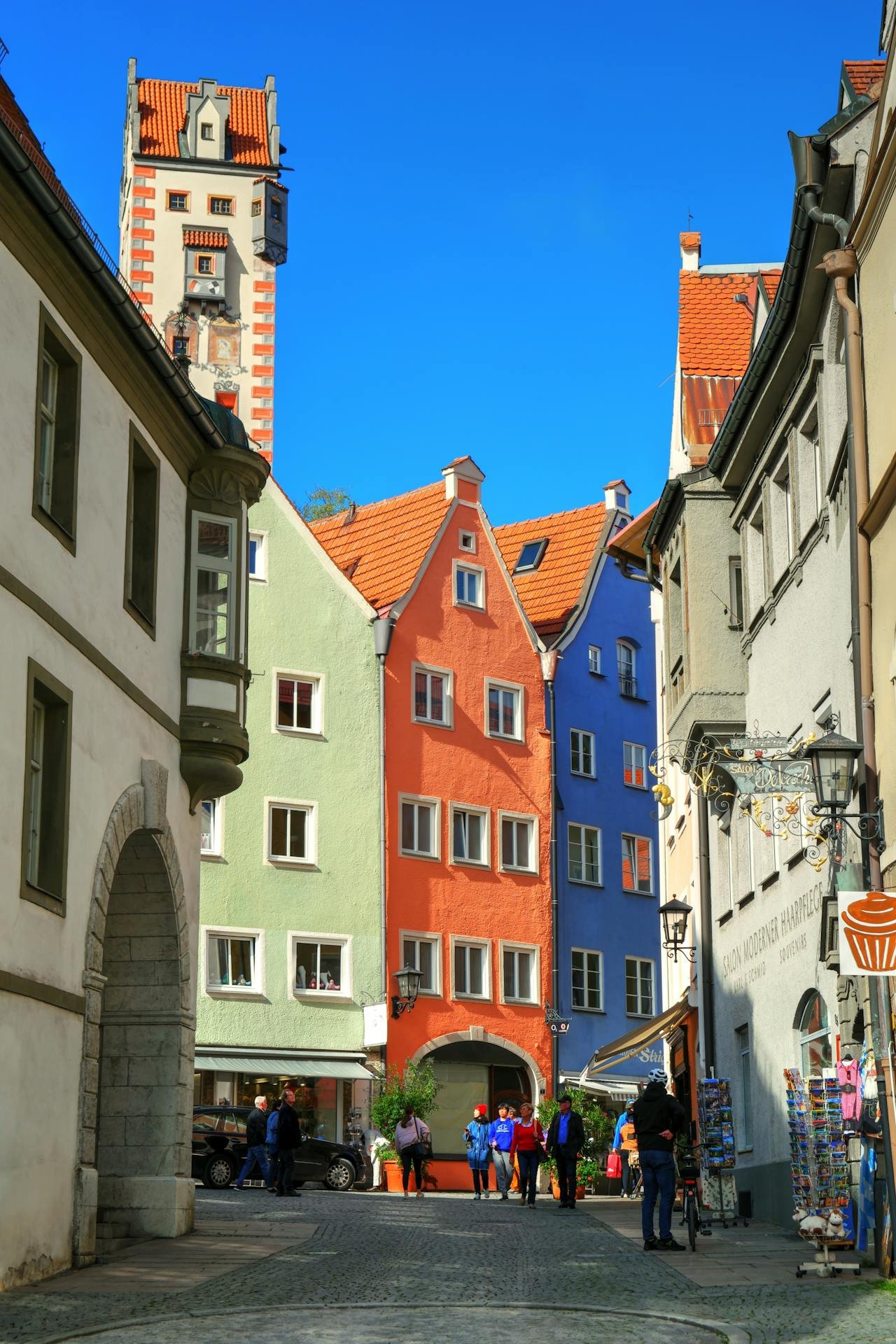
Fussen, nestled in the magnificent Alpes, is renowned as the highest-altitude Bavarian town. Because of its advantageous location, the town is well-known as a winter sports destination for professional athletes and fans.
Fussen was formerly a major hub for lute craftsmanship and trade. Today, It offers travelers many attractions, including breathtaking Gothic and Medieval buildings, luxurious resorts, and precious art exhibitions.
One of the few surviving examples of a late Gothic castle in southern Germany, the Fussen High Palace is home to an exceptional collection of Gothic and Renaissance paintings.
The town is adorned with stunning baroque churches, where you can see the region’s oldest fresco, over a thousand years old.
You may take a quick train trip from Fussen to see Hohenschwangau, a lesser-known site, and the most visited tourist attraction in Germany, the Neuschwanstein castle.
6- Lindau

Lindau is one of the small German towns situated on the border with Switzerland. It’s among Germany’s finest locations, if I may say so.
It has a breathtaking blue lake, the towering Alps, and a small village with twisting cobblestone streets.
I suggest seeing the lighthouse in Lindau, strolling around the old town center, and stopping at Haus zum Cavazzen. This mansion has several glass and art exhibitions.
Bavaria’s Lindau is around two hours drive from Munich.
7- Heidelberg
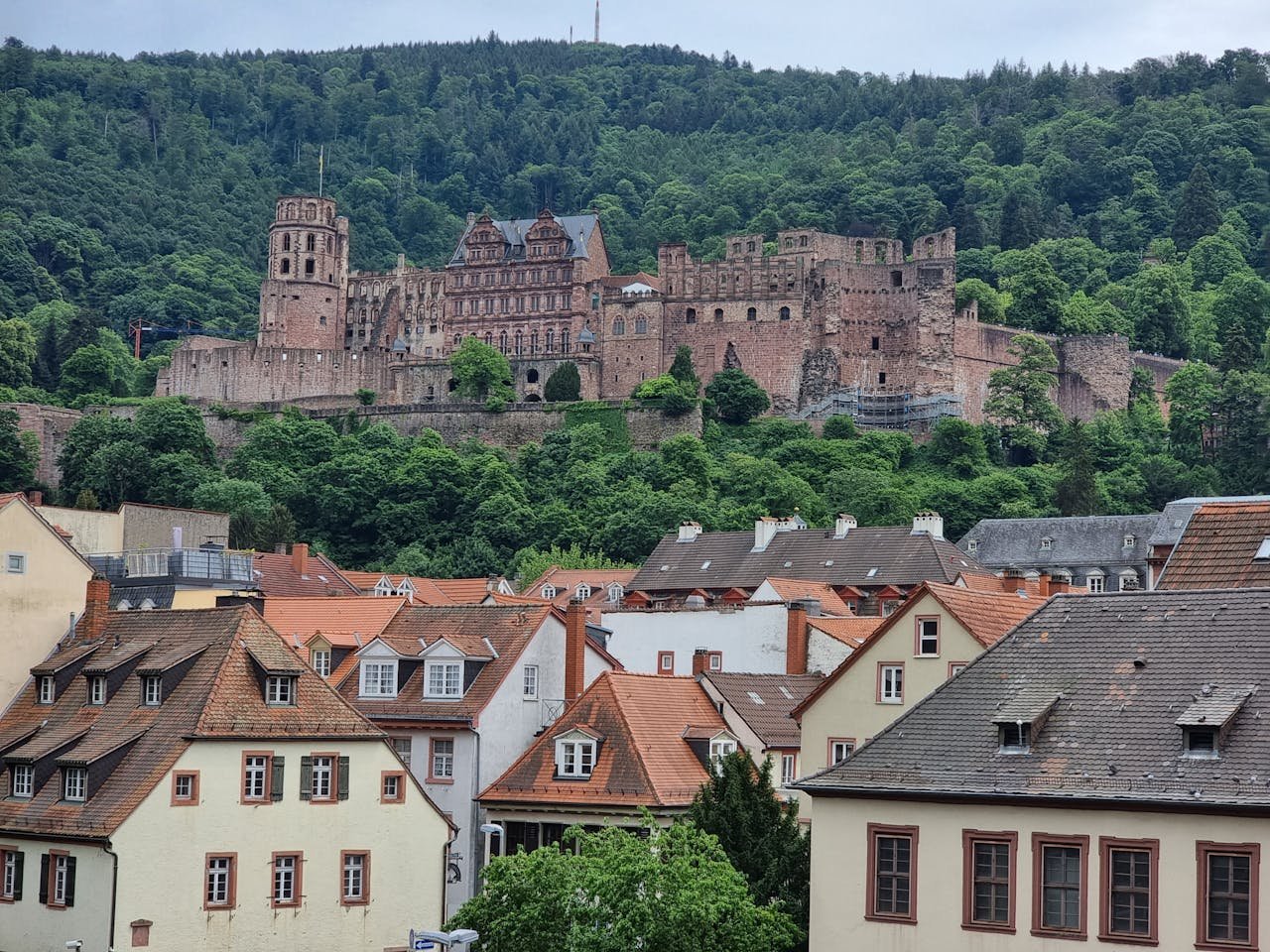
Heidelberg, the home of Heidelberg University, is a well-liked vacation spot where Germans live. Who wouldn’t want to wake up every day to view straight out of a fairy tale?
Heidelberg’s history predates the 12th century, and its university, built in 1386, is the oldest in Germany. The charming old city center has been wonderfully maintained, features elegant buildings and cozy, tiny side streets.
The Old Bridge, which spans the Neckar, offers views of the town and the castle above it. However, the Königstuhl, one of the hilltops around Heidelberg, offers the greatest views.
You may use the funicular or ascend over a thousand stone steps to get there.
But Heidelberg is alive and dynamic, so don’t let its lengthy history deceive you! There are plenty of cultural events and hip bars because students comprise about 25% of the population.
8- Monschau
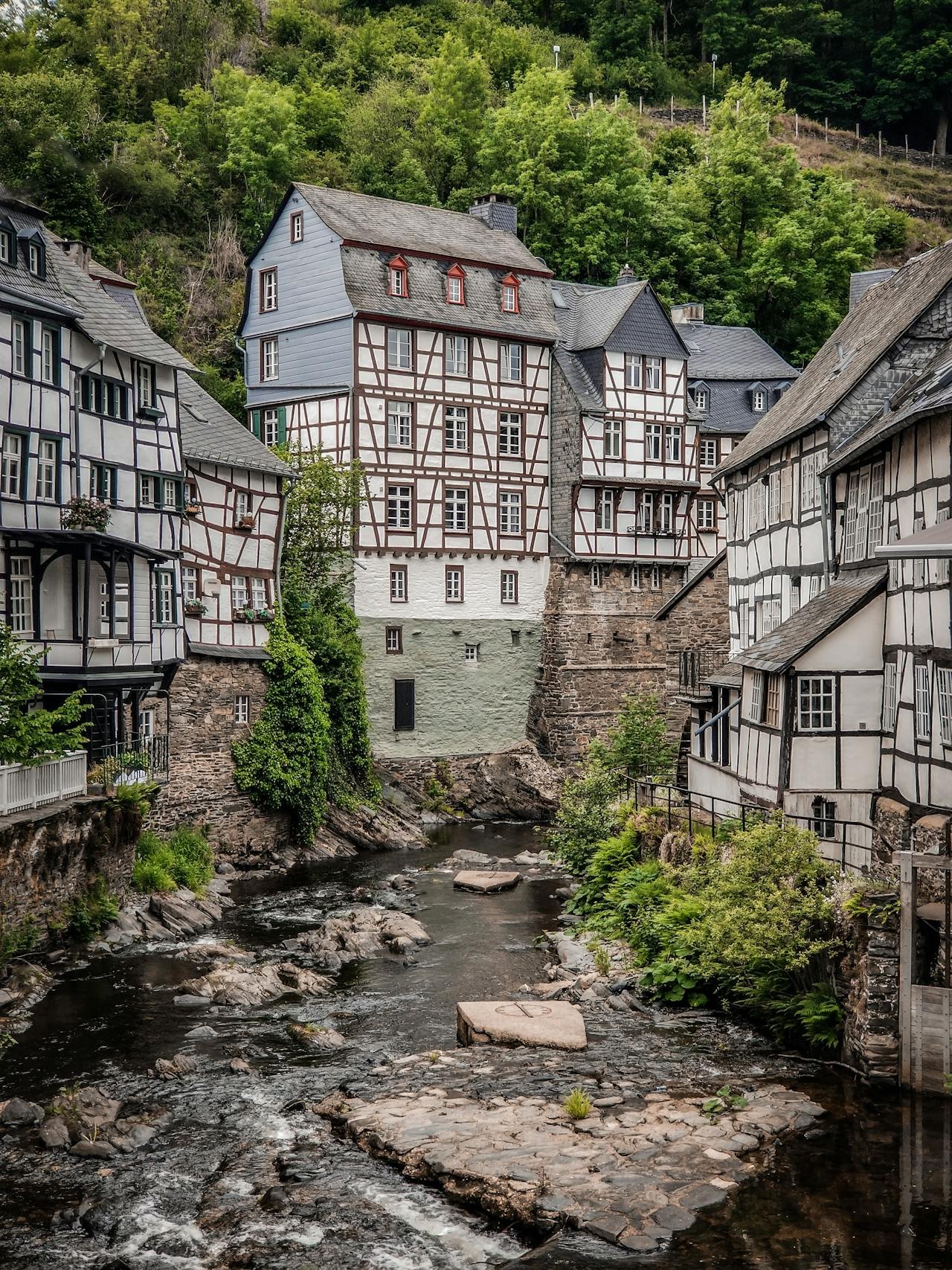
The charming town of Monschau needs to be on any list of pretty small towns in Germany. It offers great cultural and natural experiences in Germany’s Eifel area.
It is renowned for its medieval walls, timbered homes, and charming streets. What makes it even more unique is that it is situated on a river.
While here, I suggest you visit Rotes Haus, which translates to “Red House.” This mansion, currently open for tours, was formerly owned by a prosperous textile-industrialist family.
The 120-year-old, family-run Senfmuhle Monschau mustard mill also piqued my interest.
Most visitors come here for the beautiful Altstadt or the old town, which features dreamy wood-framed homes with window boxes displaying flowers, charming little stores, and mouth watering eateries.
It is recommended to have comfortable shoes as this area has 240 km of hiking paths.
9- Marburg

You won’t find a finer place to explore German fairy tales than Marburg, a town in Hessiani renowned as the university town where the Brothers Grimm studied and got ideas for some of their stories.
In addition to its charming cobblestone alleys and historic churches, the town is well-known for its whimsical sculptures of the most well-known Grimm characters, such as Cinderella’s slipper and the Frog King reading a book on the side of a building.
10- Dinkelsbuhl

Dinkelsbuhl, one of Germany’s last remaining medieval walled towns, is situated along the Romantic Road in Bavaria. It gives the German countryside more personality and color.
Dinkelsbuhl was formerly a significant city in the Holy Roman Empire. Each July, the city remembers its rescue during the Thirty Years War with the “Kinderzeche” festival, during which people wear vibrant outfits that create a pageantry-like atmosphere.
Among the must-see sites is the 12th-century tower of St. George’s Church, built in the 15th century. Do not miss the summer heavy metal music festival.
Conclusion
These pretty small towns in Germany are my absolute favorites, and I do not doubt you will. No matter which one you visit, you’ll be in for a treat.
Everywhere in Germany, from the picturesque little cities to the small towns, there is something special and enthralling to offer.
Would you kindly let me know which of these you visit and what you do there?
I am Zoe Grace, a passionate enthusiast of cruise ships. With a decade of firsthand experience in the cruising industry, I have developed a deep understanding of the intricacies and wonders that these majestic vessels hold.
Now, I am excited to embark on a new journey as an author, sharing my knowledge and insights with readers who share my fascination for the world of cruising.
Join me as we explore the captivating world of cruise ships together.




